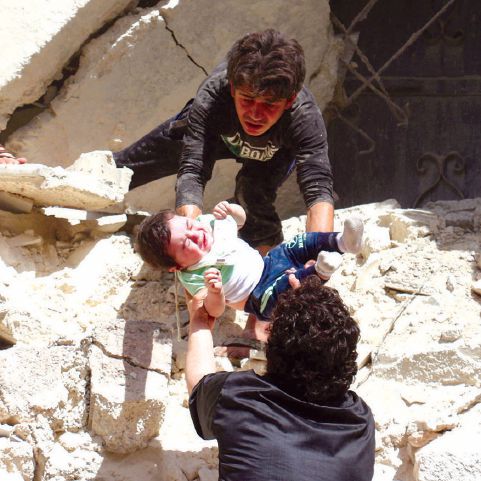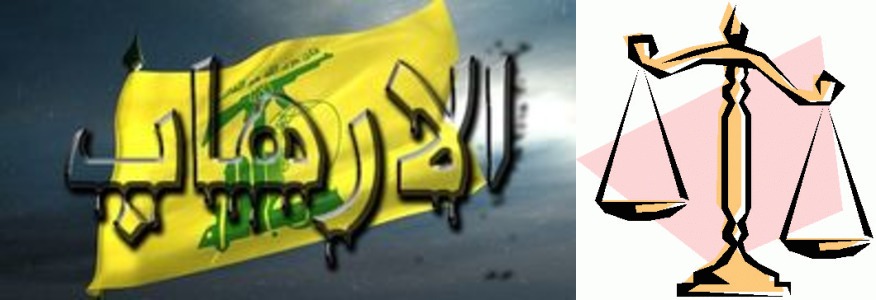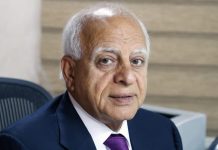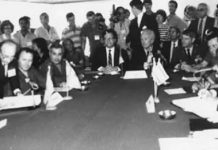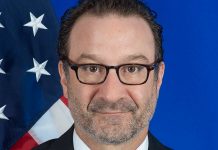What Happens in Damascus Decides Syria’s Fate
Eyad Abu Shakra/Asharq Al Awsat/September 07/16
When everybody was talking about Turkish troops entering the northern Syrian border town of Jarablus, the dirty deal in greater Damascus was approaching its completion. The long suffering suburb of Darayya was being handed to the cut-throats of Bashar Al-Assad’s regime and its supportive militias with full international collusion under the UN flag against brazen Arab and world disinterest.
This was taking place in what was once a “Syrian Arab Republic”, while somewhere else, in Geneva to be precise, the US Secretary of State John Kerry and Russian Foreign Minister Sergei Lavrov were following up their smoke-screen bluffing. However, in the spirit of things, and in order to make the bluff plausible, both were keen to claim that there was still a big gulf between Washington’s and Moscow’s positions on Syria.
Actually, what has and will happen in Geneva should not surprise or convince any serious follower of the Syrian crisis for more than five years; and those who have observed its evolution – thanks to international collusion and bloody suppression that seeks a “military solution” – from a spontaneous moderate popular uprising to a civil, regional and open-ended sectarian one aiming at the uprooting and expulsion of the Sunni Arabs of Iraq and Syria.
Given the above, it could be said that some groups within the Syrian opposition may be blamed for “militarizing” the uprising, thus falling in the trap that Assad and his backers prepared for them. They may deserve the blame because they were supposedly aware of the nature of a police state built by ruthless and suppressive sectarians.
The huge popular demonstrations that filled the streets and squares of the city of Hama in the summer of 2011 were the turning point. Seeing hundreds of thousands demonstrating that day, in a city brutally attacked and devastated by the regime, and that lost between 20,000 and 40,000 of its inhabitants within less than a month in 1982, must have shocked Assad. The ensuing panic was bound to lead to the declaration of all-out war against any town, neighbourhood or village that challenges its authority.
Indeed, this is exactly what the regime – or those who decide on matters of war and peace – did, adopting a three-part strategy:
• Calling on non-Syrian sectarian Shi’ite militias to fight for the regime under the religious order and military command of the Vali-e-Faqih in Iran.
• Exploiting its “fifth column” of extremist Sunnis or those who claim to be fighting for the Sunnis, after releasing them from its prisons, on overseeing their emergence from ‘hideaways’ well known to the regime’s intelligence agencies in order to undermine the uprising from within. They would achieve its goal by outbidding rhetoric and diverting the opposition away from moderation and peaceful means to belligerency and flagrant sectarian confrontation.
• Exploiting the notion of ‘Alliance of Minorities’ long kept in reserve for the opportune moment. In fact, some senior Christian clergymen, Syrian and non-Syrian, actively incited Western governments against the uprising; and one of them summed up his views during a European visit in the early months of the uprising that by saying “Assad’s regime may be bad and corrupt, but what the uprising would bring is worse”.
This strategy has created the political, humanitarian and political humanitarian catastrophe we witness today. Sectarian Shi’ite militias have temporarily managed to save the regime from collapse, and given rise to a sectarian (Sunni) counter-reaction that, as time passed, marginalized nationalist, liberal, moderate currents within the uprising. Planting the regime’s extremist “fifth column” to undermine the uprising has proved a success. Finally, religious and sectarian incitement in the West completed the mission as it provided an excuse, not only to ignore the uprising, but also to deprive it of the means to even defend itself, either by refusing to provide it with suitable defensive weapons or adamantly rejecting its pleas for ‘safe havens’ and ‘no-fly zones’.
The other day many celebrated ‘a great victory’ when Ankara sent its troops to a small Syrian border town, with the western ‘green light’. The fact of the matter, however, is that today’s Turkey is not the Turkey of 2011. Its freedom of movement has been drastically curtailed after being cowed by Russia, let down by NATO and shaken internally; which means she is not allowed to have any regional say except in what may harm it on the Kurdish front.
In the meantime, Russia and Iran continue the implementation of their respective geo-political plans in other parts of Syria, especially Damascus and its environs, through religious, sectarian and ethnic cleansing, mainly targeting Sunni Arabs with US and international blessings.
What Secretary Kerry said about him and Sergei Lavrov making clearer steps to move forward in terms of more temporary ceasefires and human aid, and agreeing on most ‘technical’ issues that may lead to negotiations on steps on how to end the fighting, is it just ‘tragicomic’ lying. Kerry thinks he can still sell the Syrian people the illusion that Washington is sincere about ending their suffering and finding the elusive ‘political solution’, when they know full well the following:
Firstly, that in the last months of Barack Obama’s presidency, Washington which failed to respect its ‘red lines’ on Assad’s usage of chemical weapons, would never confront Russia and Iran.
Secondly, that Washington refused from the outset to depose Assad by force; and later when the ISIS excuse became available, its approach to the Syrian crisis became hardly distinguishable from that of Moscow and Tehran. Its focus has been on ‘confronting terrorism’ (exclusively Sunni terrorism!).
Thirdly, American political and military support of the Syrian uprising has never been serious. A good proof is how the southern fronts (south of Damascus) have been strangely silent, while Washington was working overtime to concoct artificial ‘pan-Syrian’ militias which are in fact Kurdish militias with dubious previous links to the regimes with Arab and Turkmen ‘facades’ in northern Syria.
Fourthly, the only declared ‘change’ in Washington’s position vis-à-vis Syria during the last five years has been its continuous convergence with Moscow’s; even when the Russians decided on direct military intervention to help keep Assad in power.
Lastly, any talk about a ‘political solution’ is meaningless as long as military operations – especially from the air – continue, and while the Assad regime, the Russians, the Iranians and their henchmen carry on with their crimes of ‘demographic change’, the latest example is Darayya!
What has befallen Darayya is extremely dangerous because the fate of Syria is decided in Greater Damascus, and the fate of Greater Damascus is decided by the silenced southern fronts and the cheap theatricals of the Geneva ‘talks’!
















